It was 1951 that a Japanese researcher found a two dimensional lattice structure that could lock electrons. It has taken over seven decades to find a 3D structure.
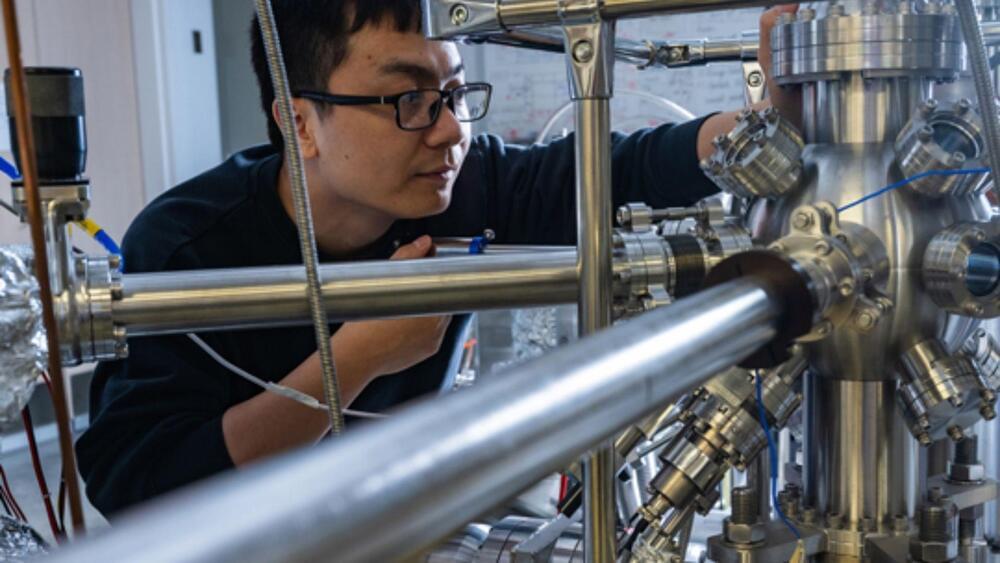

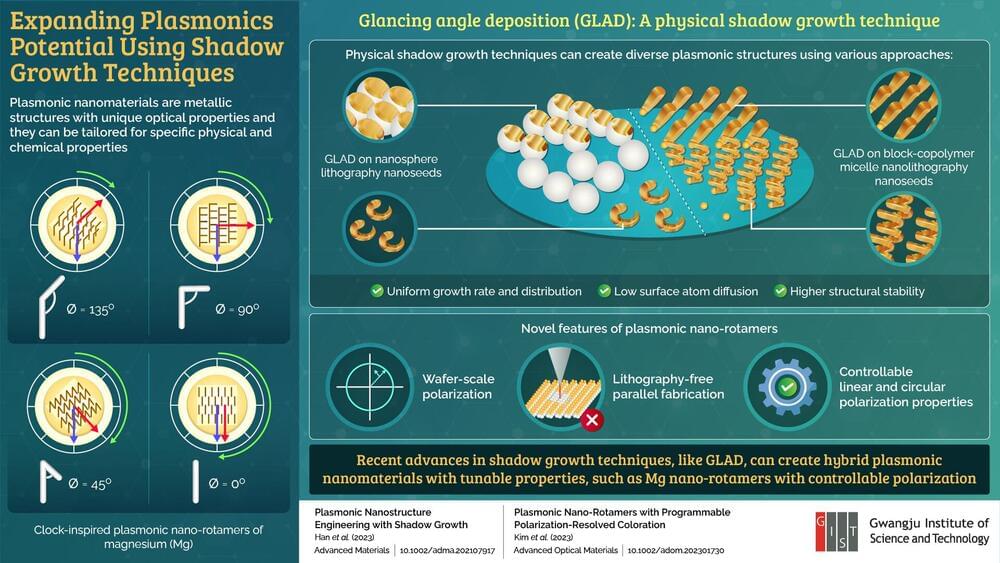
Plasmonics are special optical phenomena that are understood as interactions between light and matter and possess diverse shapes, material compositions, and symmetry-related behavior. The design of such plasmonic structures at the nanoscale level can pave the way for optical materials that respond to the orientation of light (polarization), which is not easily achievable in bulk size and existing materials.
In this regard, “shadow growth” is a technique that utilizes vacuum deposition to produce nanoparticles from a wide range of 2D and 3D shapes at nanoscale. Recent research progress in controlling this shadow effect has broadened the possibilities for the creation of different nanostructures.
Now, in twin studies led by Assistant Professor Hyeon-Ho Jeong from the Gwangju Institute of Science and Technology (GIST), Republic of Korea, researchers have comprehensively shed light on the recent advances in shadow growth techniques for hybrid plasmonic nanomaterials, including clock-inspired designs containing magnesium (Mg).

The speed of light can be intentionally reduced in various media. Various techniques have been developed over the years to slow down light, including electromagnetically induced transparency (EIT), Bose-Einstein condensate (BEC), photonic crystals, and stimulated Brillouin scattering (SBS).
Notably, researchers from Harvard, led by Lene Vestergaard Hau, reduced light speed to 17 m/s in an ultracold atomic gas using EIT, which sparked the interest in exploring EIT analogs in metasurfaces, a transformative platform in optics and photonics.
Despite the benefits, slow-light structures face a significant challenge: Loss, which limits storage time and interaction length. This issue is particularly severe for metasurface analogs of EIT due to scattering loss of nanoparticles and sometimes absorption loss of materials.
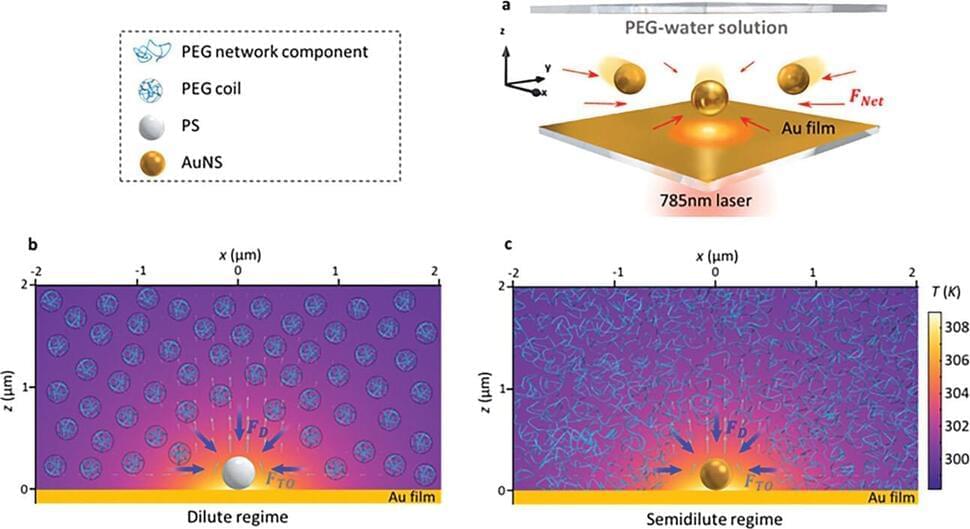
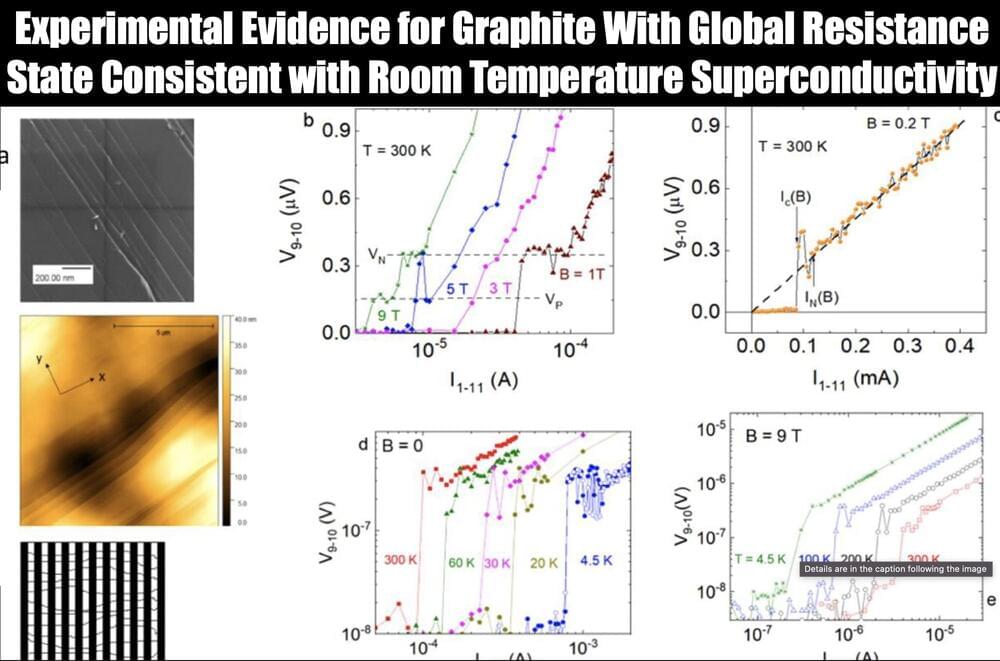
Advanced Quantum Technologies is a peer reviewed journal that has published a paper – Global Room-Temperature Superconductivity in Graphite. The researchers are from Brazil, Italy and Switzerland.
They use the scotch-taped cleaved pyrolytic graphite carrying the wrinkles that resulted from this cleaving to which they also refer as to line defects. They detected experimental evidence for the global zero-resistance state. The experimental data clearly demonstrated that the array of nearly parallel linear defects that form due to the cleaving of the highly oriented pyrolytic graphite hosts one-dimensional superconductivity.
One-Dimensional room temperture and room pressure superconductivity is what part of the theory and claims proposed for LK99 and sulfurized LK99 and PCPOSOS.

The team was thrilled with this discovery and saw the potential for creating durable patterns on the glass surface that could produce electricity when illuminated. This is a significant breakthrough because the technique does not require any additional materials, and all that is needed is tellurite glass and a femtosecond laser to create an active photoconductive material.
“Tellurium being semiconducting, based on this finding we wondered if it would be possible to write durable patterns on the tellurite glass surface that could reliably induce electricity when exposed to light, and the answer is yes,” explains Yves Bellouard who runs EPFL’s Galatea Laboratory.


Scientists used a laser-based technique to reveal hidden quantum properties of the material Ta2NiSe5, potentially advancing the development of quantum light sources.
Certain materials have desirable properties that are hidden, and just as you would use a flashlight to see in the dark, scientists can use light to uncover these properties.
Researchers at the University of California San Diego have used an advanced optical technique to learn more about a quantum material called Ta2NiSe5 (TNS). Their work was published in the journal Nature Materials.
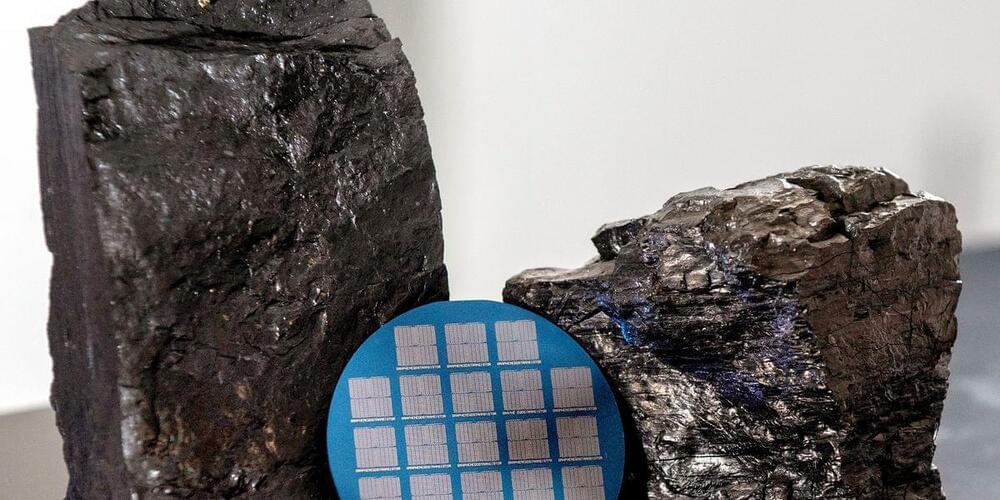
New research reports magnetic and electrical effects that suggest superconductivity.